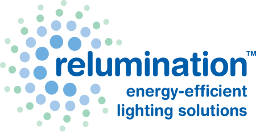Parking lots waste a lot of energy! Most everyone has seen the parking lots of retail businesses at 2 A.M. with not a car in sight and lights on at full power. The U.S. Department of Energy conducted case studies at two retail parking lots, replacing their light fixtures with LEDs. The retrofits have decreased energy costs dramatically while improving the lighting at both lots.
Raley’s Supermarket in West Sacramento, California, replaced half of their parking lot’s 320-watt metal halide fixtures with LEDs. Their LED fixtures came installed with a motion sensor that turns the lights to a lower power after five minutes of inactivity. The LEDs consume 149 watts at full power and 52 watts at low power. Much of their savings came from the motion sensor, which was only at full power 55% of the time. The supermarket also saved a substantial amount of money on maintenance fees. According to the report, annual maintenance costs for the metal halide fixtures were $200-$215 per fixture. They were also supposed to last 3-5 years, but the company owner said they were “lucky to get two years.” The LED fixtures are estimated to last 50,000-90,000 hours, which can mean as much as 20 years of maintenance free lighting. Raley’s Supermarket’s payback period is expected to be in 3-4 years.
T.J.Maxx in Manchester, New Hampshire, replaced their parking lot’s 400-watt high pressure sodium fixtures and 400-watt metal halide fixtures with LEDs. These fixtures also came installed with a motion sensor. On top of energy savings, the business also saved $11,000 annually on maintenance for spot relamping. Their expected payback period is in 3 years. A survey was administered to employees of the plaza T.J.Maxx is located in about the new lighting. According to the survey, 78.1% of the employees said the new lighting system provided more light than the original system and improved the appearance of the parking lot. Employees also said the new parking lot lighting “helps to increase safety and security within the plaza,” and the motion sensors “use less energy, and that is better for the environment.”
With both of these retail businesses seeing their return on investment in as little as three years, LED fixtures are a cost efficient and sustainable alternative to other fixtures, not to mention they reduce night time light pollution. As a member of the International Dark-Sky Association we actively support reducing light pollution.

